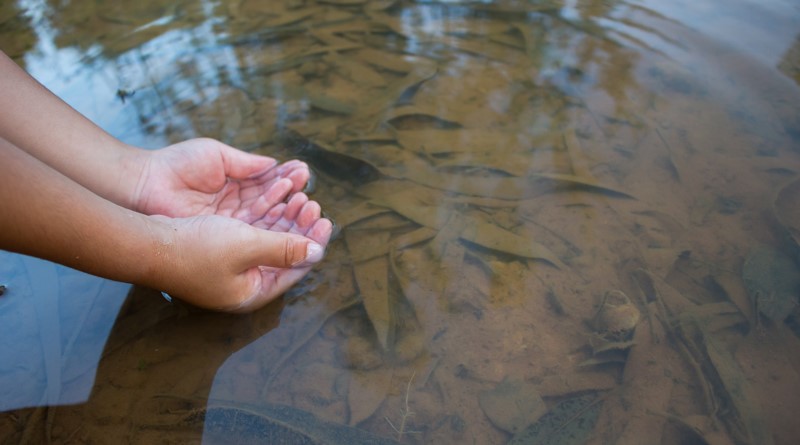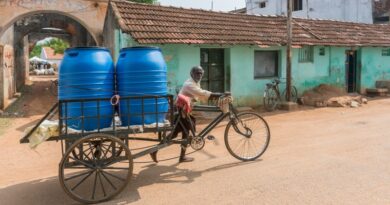Floods, droughts force people in India, other countries to flee homes multiple times

Water-related disasters have forced people to flee from their homes nearly eight million separate times in 10 of the world’s worst-hit countries, including India, last year, said global non-governmental organization Oxfam.
Many of these people had to move multiple time, a 120 per cent increase compared to a decade ago. In five of those countries, levels of severe hunger have nearly tripled over the same period.
India, Somalia, China, Philippines, Pakistan, Kenya, Ethiopia, Brazil, Bangladesh, and Malaysia topped the list of countries that suffered the largest displacement of people from floods and droughts last year, according to the Global Internal Displacement Database. In those countries, the number of times people were displaced from their homes soared from 3.5 million in 2013 to 7.9 million in 2023.
Climate change has increased the intensity and frequency of floods and droughts.
According to data collated by Oxfam, recorded flood and drought disasters in those 10 worst-hit countries have skyrocketed from just 24 in 2013, to 656 last year. Somalia alone was hit by 223 different flood or drought events in 2023 against just two in 2013, for instance. The Philippines was hit 74 times (compared to just three in 2013), Brazil 79 times compared to four, and Malaysia 127 times compared to just once in 2013.
Globally, floods and droughts alone have forced over 3.4 million people out of their homes just last year – as many as the entire population of Uruguay.
Oxfam calculated that in Bangladesh, Ethiopia, Kenya, Pakistan, and Somalia – among the least prepared to cope with the impact of climate change – the number of people suffering acute hunger has risen from 14 million in 2013 to over 55 million in 2023.
“All these disasters have knock-on effects on people’s lives and livelihoods, and compounded by conflict, economic shocks and deep inequalities, they have fueled hunger.”
“Climate injustice is rife. From the scores dying from scorching heat in Bangladesh to the thousands forced to flee floods in Pakistan, it is the most vulnerable people – and those least responsible for the climate crisis – who are bearing the brunt, while rich polluting nations continue to do too little too late to help them,” says Nuzhat Nueary, Oxfam Water Insecurity and Climate Policy Coordinator.
“Climate change and El Niño weather patterns have supercharged droughts, floods and cyclones. All these disasters have knock-on effects on people’s lives and livelihoods, and compounded by conflict, economic shocks and deep inequalities, they have fueled hunger. Ultimately, mass movements put pressure on the limited water resources creating further water stress in these countries.”
In Somalia, continuous temperature rise (1.5°C, up from 1°C in 1991) has resulted in more frequent and prolonged droughts, often followed by flash floods and cyclones. Despite accounting for less than 0.03% of global carbon emissions, the country has suffered billions worth of losses due to recurring floods and droughts. Recovering from the last December floods alone was estimated at $230 million.
The last Deyr rainy season -which followed five consecutive seasons of drought -has brought massive flooding, forcing 1.2 million people to flee their homes and killing 118 people. These disasters have compounded the impact of ongoing conflict, political instability, and economic shocks, leaving almost half of Somalia’s population in urgent need of humanitarian assistance.
In Bangladesh, unpredictable cyclones and other water-related disasters forced more than 1.8 million people to leave their homes in 2023. They caused severe damage to infrastructure like schools, markets and other essential services. The country contributes only 0.56% of global carbon emissions.
Zerin Ahmed, Oxfam’s Senior Program Officer in Bangladesh, said: “With no crops or income families have been forced to move, some multiple times. Those who are left behind live with constant fear about the future, as cycles of consecutive disasters have depleted all their resources, exhausting their last ability to cope.”
“Ending people’s suffering is possible. Rich polluting nations must cut emissions and provide adequate climate finance to countries most impacted by the climate crisis so that they can cope better and rebuild after climate shocks, added Nueary.
“They must also inject funding into the new loss and damage scheme. It is not a courtesy gesture but an obligation for the damage they have caused. With proper funding, the most impacted nations can develop early warning systems and other measures to prepare for and mitigate the effects of climate change, and can free up resources to invest in social protection to help people cope.
“Local communities on the frontline of climate response, and vulnerable groups – especially women, youth, and indigenous communities –have already championed solutions, and must be at the heart of climate decisions, funding, and action.”


